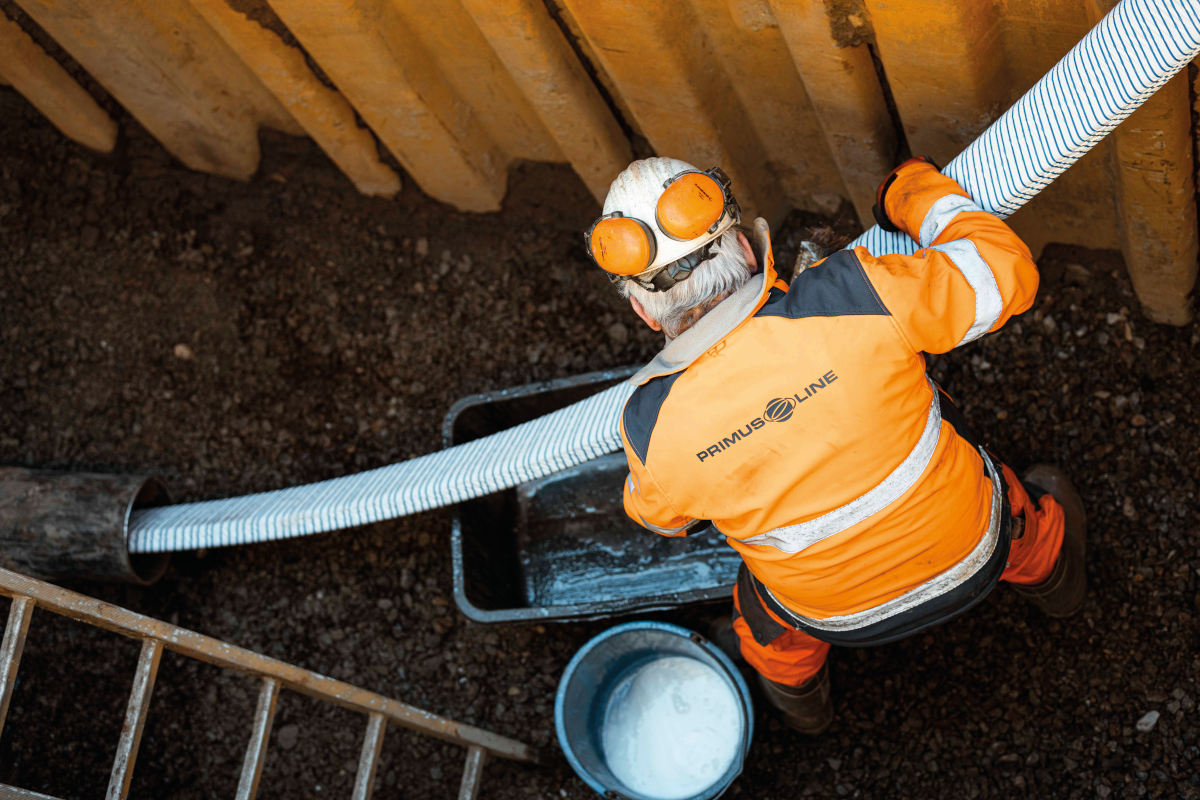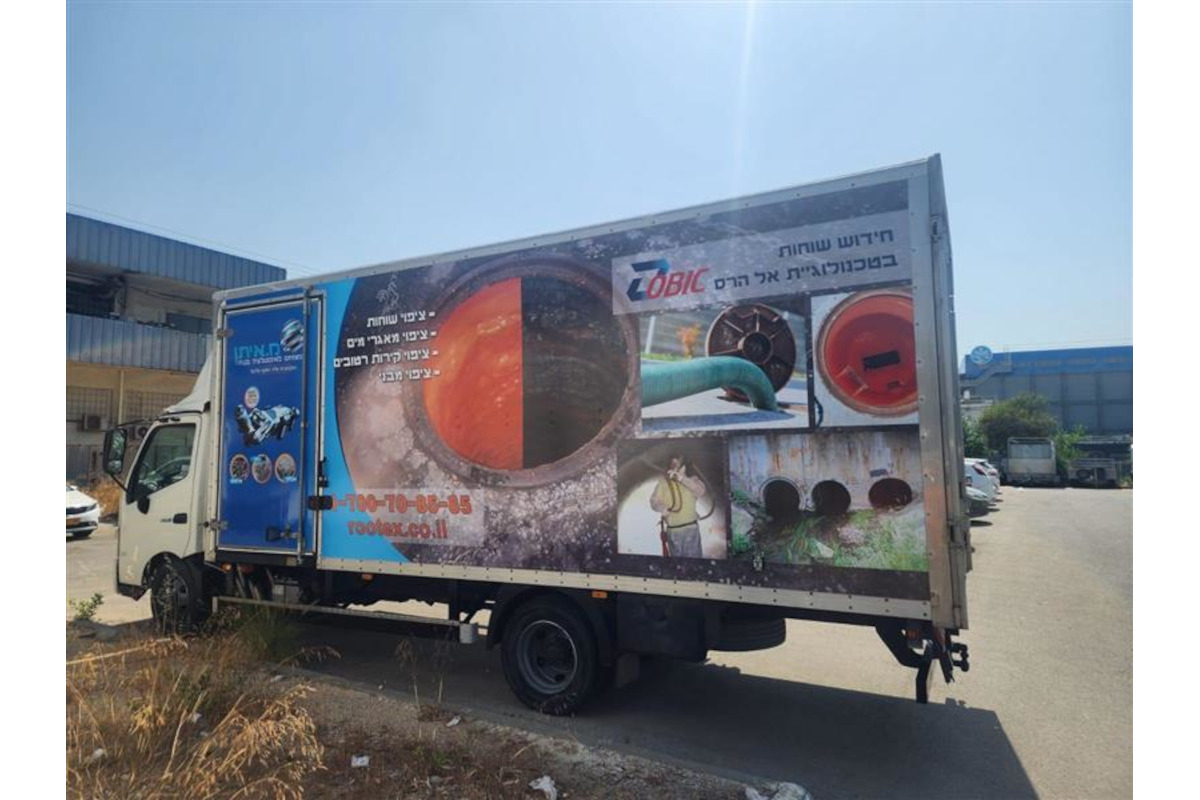Trenchless Options Keeps Production Rolling at Komatsu UK

CCTV survey of the Pitch Fibre pipes, which were first installed in the early 1960s, highlighted that they were badly delaminated and deformed and that there were holes in the pipe wall running over the full 380 m length in question. In one place, the pipe was closed with only just enough room to pass a jetting hose through it. According to Dave Bushby managing director of Keep Trenchless Technologies Ltd (KTTL), formerly Environmental Services North East Ltd., the company employed by Komatsu as consulting engineer and contractor to survey the site, plan the necessary works and undertake the pipe repairs: “I was horrified when I saw the state of the pipe. This is possibly one of the most deformed pipelines I have yet come across.”
Options and Limitations

After careful consideration of the options available, KTTL decided that open-cutting the pipeline to affect repair was simply not practical. If this conventional method of repair had been adopted to replace the failed pipe Komatsu’s production would definitely have been adversely effected. This was because the location of the pipe was right in the center of the main production area. Excavation would have required the removal of a 15-mm thick mild steel floor. This would be followed by excavation of a 500-mm thick reinforced concrete slab and further excavation through rock and shale ground to reach the drain depth, which averaged about 3 m. This was confirmed using core sampling.
The estimated time for this traditional method of pipe replacement was around 18 weeks. The cost of the open-cut option was also in the region of £750,000.

As it was, Komatsu was looking for an option that would not only have minimal affect on production but also be able to be completed in just one week.
Other site investigations also showed that there was no alternative route along which a new pipeline could be laid that would effectively drain the site as required. So the existing route of the pipe had to be maintained.
Berolina-Liner Option

While several system options were available to the contractor, speed was of the essence. This led KTTL to investigate UV-cure options more closely. Ultimately, the Berolina-Liner System was chosen for the work.
Berolina-Liners are seamless, glass-fiber-reinforced web constructions, the basic material being dependent on the requirement profile, or are produced as a sandwich construction using both materials. They are easily cured using an Ultra Violet Light train to activate the resin impregnated into the liner materials, which are theoretically infinitely elastic. This special feature is made possible by the patented engineering wall construction.
The fiber fabrics in the Berolina-Liner overlap and are arranged so that the overlaps are staggered, a technique which according to BKP offers definite advantages including:
- The Berolina-Liner can be installed in one piece, even at cross-sectional and/or profile crossovers and easily adjusts to match the local conditions.
- The continuous fibre orientation in the direction of the circumference optimises the external loads without hindering elasticity.

For a liner installation, a protective semi-section film sleeve is first drawn into the pipe to be rehabilitated using a winch and then the ready-made Berolina-Liner is drawn through the sewer, sliding along the semi-section. Both ends are closed with packers and the tube is inflated with compressed air with a minimum pressure of 0.5 bar, which forces the liner fully against the inside wall of the host pipe.
The impregnated liner materials are situated between two airtight and waterproof flexible tubes. The outer tube of the Berolina-Liner prevents contamination of the soil and groundwater and also prevents the resin from penetrating into any laterals that may be present along the length of pipe being treated. The outer tube is also UV-tight so preventing any curing of the liner during transport or handling.
A UV light source is then passed through the compressed air filled liner, if necessary with CCTV control. The UV light source activates the curing process of the resin curing the liner into position. The second, inner protective tube is then removed. If the tube ends are sealed, the hardening/curing process occurs free of emissions. In this way, an environmentally friendly, stable inner lining is produced for all common pipe materials, including brick sewers, in a short time.

As well as proven application in the field, the Berolina-Liner has also undergone significant testing by internationally recognized materials and testing organizations such as WRc. Under the testing regime of the WRc, Berolina-Liner manhole to manhole lining system has achieved ‘WRc Approved’ status whereby the liner production method, installation technique and product support has been scrutinized by WRc and found to meet its exacting standards. The Berolina-Liner system has also undergone and passed stringent testing in respect of its leak-tightness subsequent to installation and its ability to prevent infiltration.
Komatsu Installations
On the Komatsu site, the timing for the works was just seven days. Work started on a Saturday and finished the following Saturday, with some 18 individual lining set ups having to be achieved in that time whilst working around other site contractors.
On one set up, one problem occurred when, due to pipe deformation, a 30-m section of host pipe was virtually closed up to the point where it was only just possible to pass a jetting hose through it. Given the client’s insistence that an open-cut option to expose this defect could not be used given the time frame involved, the KTTL crew attempted the installation even though the outcome was uncertain. Eventually the crew managed to get through the deformed section, only to discover a huge hole in the host pipe. Despite this, a line was passed through the defect and a sacrificial pre-liner was pulled into place over the hole prior to lining with the intended reinforced liner. Lining was the Berolina-Liner was ultimately achieved successfully, as were the remainder of the other 18 lining operations.

Representing BKP Berolina-Liner, Borje Persson said of the Komatsu project: “This is the sort of project that the Berolina-Liner was designed for. The simplicity, yet strength, of the liner and the installation technique is such that, with good logistical control, the one liner truck that is required on site can be located some distance from the pipe access point, overcoming many access difficulties. The speed of the installation is also a key factor. How many other liner options can achieve 18 individual liner installations in just seven days – that is more than two liners per day.”
Commenting on the project for Komatsu UK, Paul Collins, building maintenance manager stated: “We selected Environmental Services North East Ltd to carry out this repair due to the location of the drain and the amazing ground breaking technology offered. The professional approach by KTTL was second to none and a full survey and repair method was fully communicated. What could have been very disruptive to our production turned out to be a quick and simple repair with zero effect to our busy production schedule. Since the repair we have used the liner method many times to maintain and repair out waste frame work. The advantages of using such a repair method are numerous, the fact there is very little disruption to the repair vicinity and no environmental impacts compared to other repair methods are just a few.”
This article was submitted by BKP Berolina Polyester GmbH & Co. KG, based in Berlin, Germany.




